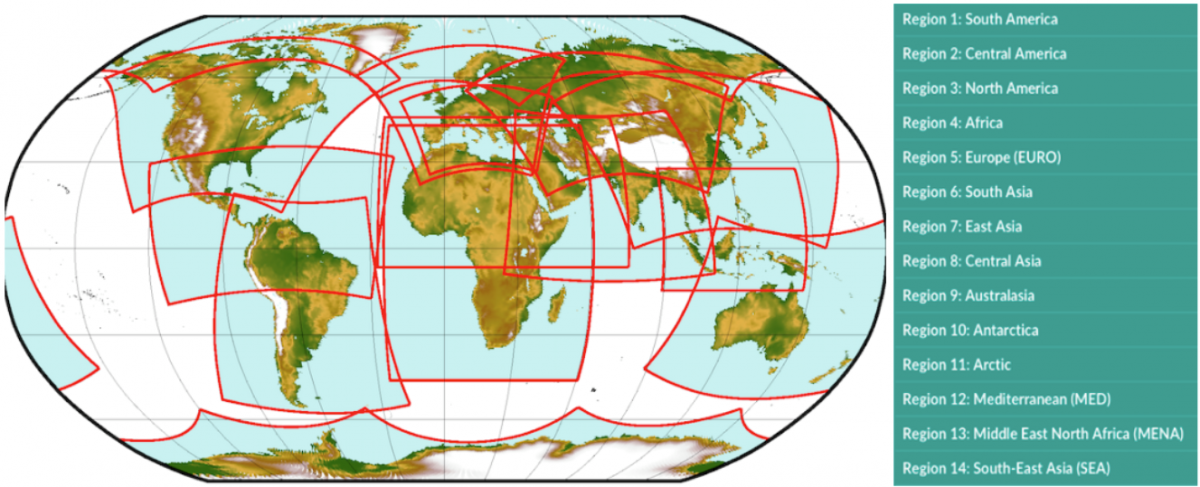Recently, the Copernicus Climate Data Store has made available all the 14 domains of the CORDEX: an international initiative to produce regional climate projections. This is a huge milestone, since regional climate models provide higher resolution than global climate models (~11km in European regions and ~22Km over other domains). Therefore, they yield more detail to inform climate mitigation and adaptation efforts at a local level. However, this breakthrough is not as easy as merely republishing the data from CORDEX into the CDS. We know because we have been involved in part of this process, through the C3S_34d contract and in collaboration with the Santander Meteorology Group of the Institute of Physics of Cantabria and the Spanish National Research Council, IPSL (France), and SMHI (Sweden).
CORDEX splits the world into 14 different domains in order to run the regional climate models for each of the areas. The C3S_34d project took care of curating 12 out of the 14 domains of CORDEX: North America, Central America, South America, Africa, East Asia, South Asia, Southeast Asia, Australasia, Arctic and Antarctica). This curation made available for the public the climate data in one place, while taking care as well of the quality control of the climate projection data.
At Predictia, our work has tackled the quality control and validation of several CORDEX domains: North America, South America, Arctic and Africa. Each one of them in two different resolutions: 0.22º and 0.44º. Among other things, this included:
- Validating the integration of the data in the CDS, by checking the catalogue completeness response and retrieval time
- Quality assurance of the data integrity and properties by using state-of-the-art software packages such as Xarray.
- Checking the integration ofthe data within the CDS toolbox.
Thanks to this and other projects, high quality climate data is available for everyone that needs it in the CDS. Read more about the project on the C3S website!
